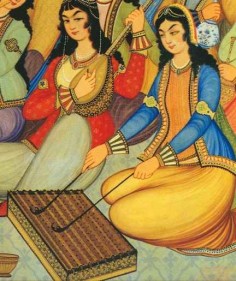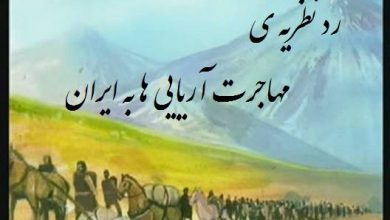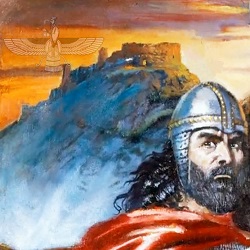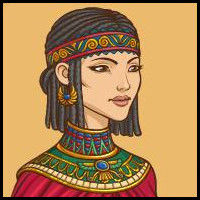Art in the Sassanid era
Art Sassanid It is mainly developed and transformed in line with Iranian religious ideas and traditionalism.
Although sometimes the Hellenistic elements left over from the period before the Sassanids came to power and signs of Roman artistic attractions and even the artistic manifestations of the tribes and peoples of Central Asia can be seen in Sassanid artworks, although the main fields of art It is the traditions of the Iranians and the religiosity of the Sasanians that artists created their works within.
Sassanid kings were the biggest and most active city builders in the history of ancient Iran.
In the realm of music, discovering, making and playing the tools and instruments belonging to this art, the Sassanians did not have any deficiency.. In the paving stones of the important buildings, the peak of the art of carving and artistic creativity of Sassanid artists can be seen. Undoubtedly, Sassanid elements and signs and artistic styles along with its tools have been transferred to the West and have been exploited and imitated.. The largest share of these heritages was given to Islam, and with the collapse and end of the work of the Sassanids, ancient Iranian art and traditional culture also came to an end..
…
Continue to download the book Art in the Sasanian Era
They have been the builders of palaces, towers and ramparts, citadels and fire temples and other political, cultural and religious places, which are decorated with limestone in geometrical dimensions, mosaics and alabaster tiles with beautiful patterns, as well as beautiful and meaningful images, especially in the interior parts. And the interior of these buildings are decorated. According to ancient traditions and rituals, they immortalize themselves in works of art with rock motifs that are surrounded by beautiful artistic images, as well as in the art of making vessels and jars, patterned pots, in delicate and beautiful stones, fabrics Colorful with happy and meaningful motifs that express the scenes of war, hunting, holidays and ceremonies and happiness, and also in carpet art with beautiful pictures and scenes, the end of artistic power with the most advanced tools and facilities that the artists of that time had at their disposal. , they were trying.
[۳] Over time, after the fall of the Sassanid government, the art of this period of Iranian history gradually regained its lofty base, despite the absence of any artistic thought in the style and style of the Sassanid era, and during the Abbasid caliphs, it was especially interested but not skillful and It was masterfully received and clumsily imitated by the artists of the time. The idea of Sasanian art existed in a remarkable way and the artists' minds were not devoid of the artistic knowledge of Sasanian Iranian artists, but the time gap and other factors had caused those creations and initiatives to be forgotten at the same time as the Sasanian rule.. Iranians at any point in time believed that Iranian art has not been defeated by any art, especially imported arts, and the leaven of the artistic initiative of Iranian artists is primarily their idea of being Iranian.. In other words, the authenticity of Iranian art was the first priority.
A researcher or historian cannot have a complete idea of how and the extent and scale of the destruction of the surviving works of art from the Sassanid dynasty in order to properly understand the extent and depth of this heritage and to find out what is the validity of Sassanid art in the era of the greatness of this dynasty. And it has been great.
Of the numerous architectural remains of the Sassanid era, only the ruins of a few cities remain today, which is a reflection of the efforts of the rulers of that period, who persevered in building cities and establishing other buildings and architectural works, and did not destroy them due to the depth of the disaster. You can imagine an image of these works in your mind. Gore city[۴] (Current Firuzabad) which was built by the early Sassanid kings before Ardashir Khoreh[۵] has a name.
The format and type of architecture shows the circular form of the architectural party in the art of urban planning. Shapur Khore city[۶] that in the era of Shapur I[۷] Son and successor of Ardeshir I (Babakan)[۸] Bishapur is built on the Firuzabad-Shush highway[۹] also has a name and its architectural style is "four ears"[۱۰] or in other words "square"[۱۱] Is. This building is most likely after Shapur's victory over Valerian[۱۲] Built by Roman Caesar. Two major highways branched from Bishapur in ancient times, and this sign has been preserved until now. These two remaining highways, which have suffered a lot of damage throughout history, meet at a right angle.. In this example, the signs of the influence of Western urbanism on Sasanian art are clearly visible.
The assumption that Roman prisoners of war played a key role in building the city of Bishapur and the roads around it is very close to reality.. Shapur I used them according to the ability and expertise of the Roman prisoners, as you know (Bazans)[۱۳] A Roman dam engineer who was one of these captives was employed in the construction of Shushtar Dam or Qaisar Dam in Khuzestan.[۱۴] In addition, from the remains of Sasanian works of art, by citing and paying attention to the study of the ruins of palaces and the residence of the kings of that dynasty, which were brought out from the ruins, it is possible to understand the greatness of the architectural art of this dynasty..
The foundation of many Sassanid art styles, forms and forms is undoubtedly Parthian (Parthian) and the role and influence of Achaemenid architectural art in Sasanian architectural works has been very small. To confirm this opinion, the ruins of Achaemenid artworks, especially in the field of architecture in Persepolis, can be seen.[۱۵] (Persepolis) and Fars[۱۶] observed. Of all the types and artistic styles of Sassanid architecture, of course, there are no significant and studied examples, for example, of the styles in which square building stones, columns of buildings, and staircase construction methods, and especially examples that can be added to the architectural styles He also studied the construction materials used.[۱۷]
[3]. Randa, A.: A.a.O. 757, sp. 1031 of the same book.
[4]. Gur, (The modern day city of Firuzabad).
[5]. Ardasir-Khurrah.
[6]. Sapur-Khurrah.
[7]. Sapur I (241-272 n.ch).
[8]. Ardasir I (226-241 n.ch).
[9]. Bisapur (Besapur).
[10]. square.
[11]. Square.
[12]. Valerian.
[13]. Bazanes (Bazanus).
[14] . Khodadadian, Ardeshir: Shoshtar, Jundishapur in the research paper of Shahid Beheshti University Faculty of Literature, 1372.
[۱۵]. Persepolis.
[16]. Persis.
[17]. Randa, A.: A.a.O.SP.758, 276.
Sources of writing:
The book of the history of Iran during the Sassanid period, by Dr. Ardeshir Khodadadian
Click on the image below to download the book Art in the Sasanian Era








Hello.. We should feel sorry for our people who are so ignorant of the history and art of their past……..are